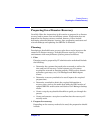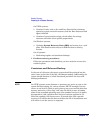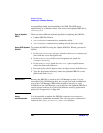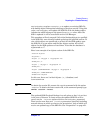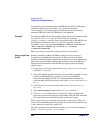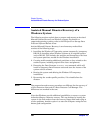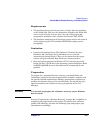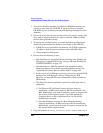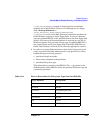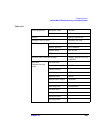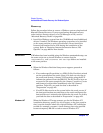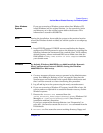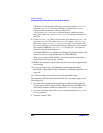
Disaster Recovery
Assisted Manual Disaster Recovery of a Windows System
Chapter 10 451
Requirements
• The partitions have to be the same size or larger than the partitions
on the failed disk. This way the information stored on the failed disk
can be restored to the new one. Also, the type of filesystem and
compression attributes of the volumes must match (FAT, NTFS).
• The hardware configuration of the target system must be the same as
of the original system. This includes SCSI BIOS settings (sector
remapping).
Limitation
• Internet Information Server (IIS) Database, Terminal Services
Database and Certificate Server Database are not restored
automatically during Phase 2. They can be restored on the target
system using the standard Data Protector restore procedure.
• Boot and system partition on Windows NT 4.0 must be physically
bellow the first 7,8 GB due to the operating system limitations. Refer
to MSDN Q224526 for more information and workaround for the
problem.
Preparation
To prepare for a successful disaster recovery, you should follow the
instructions related to the general preparation procedure together with
the specific method requirements. Advance preparation is essential to
perform the disaster recovery fast and efficiently. You should also give
special attention to the disaster recovery preparation of the Cell
Manager.
WARNING It is too late to prepare for a disaster recovery once a disaster
has occurred.
See also “Preparing for a Disaster Recovery” on page 443, in addition to
completing the steps listed in this section. To recover from a disaster
quickly and efficiently, consider the following steps and prepare your
environment accordingly:



